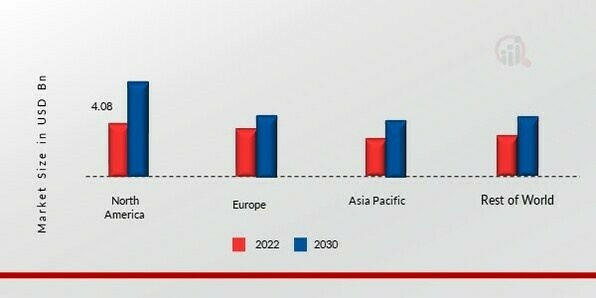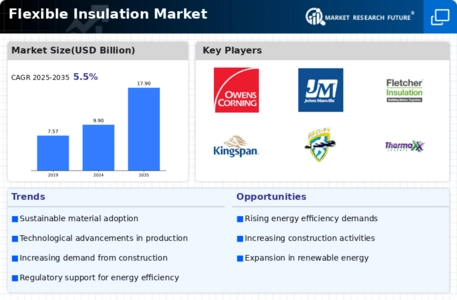By region, the report provides market insights into Europe, North America, Asia-Pacific, and the Rest of the World. The North American flexible insulation market accounted for USD 4.08 billion in 2022. It will likely exhibit a significant CAGR growth in the study period, owing to the rising demand for energy-efficient buildings, stringent government energy-efficiency regulations, and increased construction activity. Due to their outstanding thermal and acoustic insulation capabilities, flexible insulation materials are in high demand in regional residential and commercial sectors.
The expansion of the HVAC industry and the region's increasing acceptance of green buildings and energy-efficient technology all further contribute to the market's expansion. The rising demand for flexible insulation materials in the automotive and aerospace industries is also expected to propel the North American market in the coming years.
Also, the major countries studied in the market report are the U.S., German, Canada, France, the U.K., Italy, Spain, China, Japan, India, Australia, South Korea, and Brazil.
Figure 2: FLEXIBLE INSULATION MARKET SHARE BY REGION 2022 (%)

Source: Secondary Research, Primary Research, Market Research Future Database, and Analyst Review
The European flexible insulation market accounts for the second-largest global market share. The rising need for heating & plumbing systems, HVAC, acoustic insulation, and refrigeration will likely drive demand in Europe. Stringent regulations governing the insulating type and application in the region are further expected to support market growth. Commercial building expansion owing to rising demand for hotels, malls, office spaces, health institutes, and retail stores in economies such as Germany, the United Kingdom, and Spain will likely boost market demand for technical insulation over the projection period.
Further, the German flexible insulation market held the largest market share, and the U.K. flexible insulation market was the fastest-growing market in the European region.
The Asia Pacific Flexible Insulation Market is expected to grow at the fastest CAGR from 2023 to 2032. The region's growing population and fast urbanization will likely boost flexible insulation industry expansion throughout the forecast period. In addition, increased foreign investment in the region will likely fuel the market growth for technical insulation. The availability of raw resources at lower rates, combined with an ample supply of raw materials in economies such as China, India, Indonesia, and South Korea, is predicted to promote market development in the regional industrial and commercial sectors.
Moreover, the China flexible insulation market held the largest market share, and the Indian flexible insulation market was the fastest-growing market in the Asia-Pacific region.











Leave a Comment